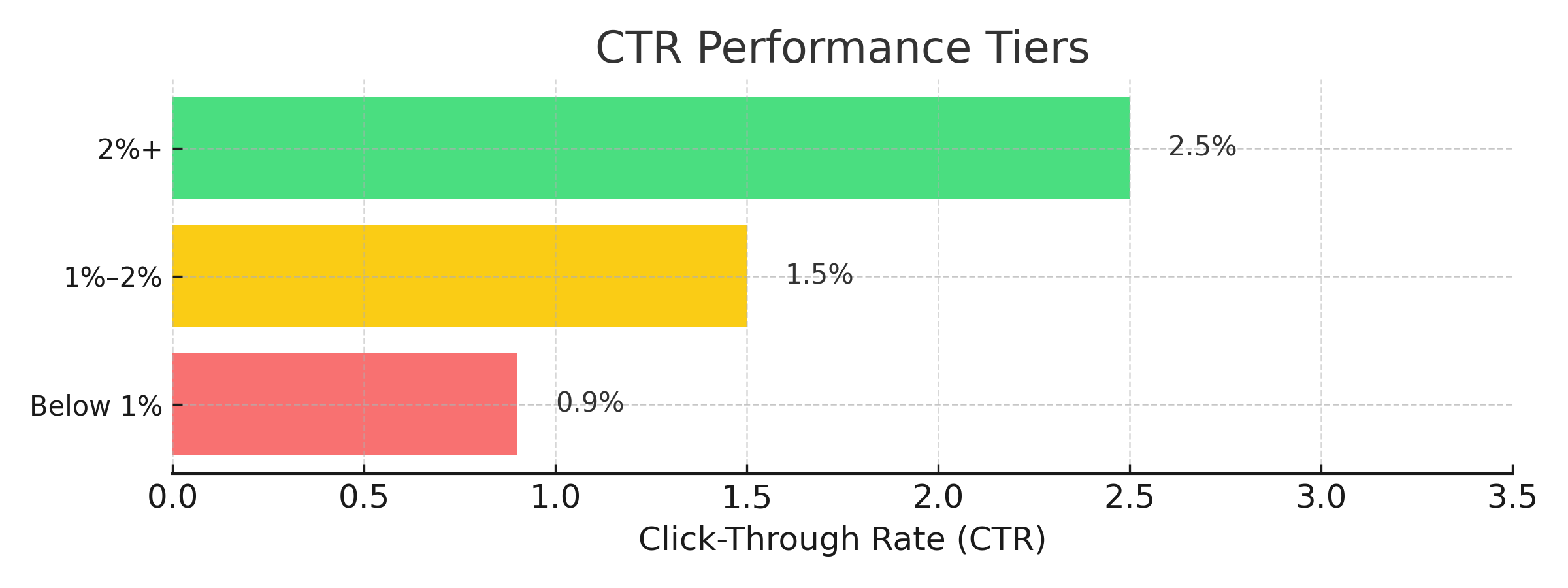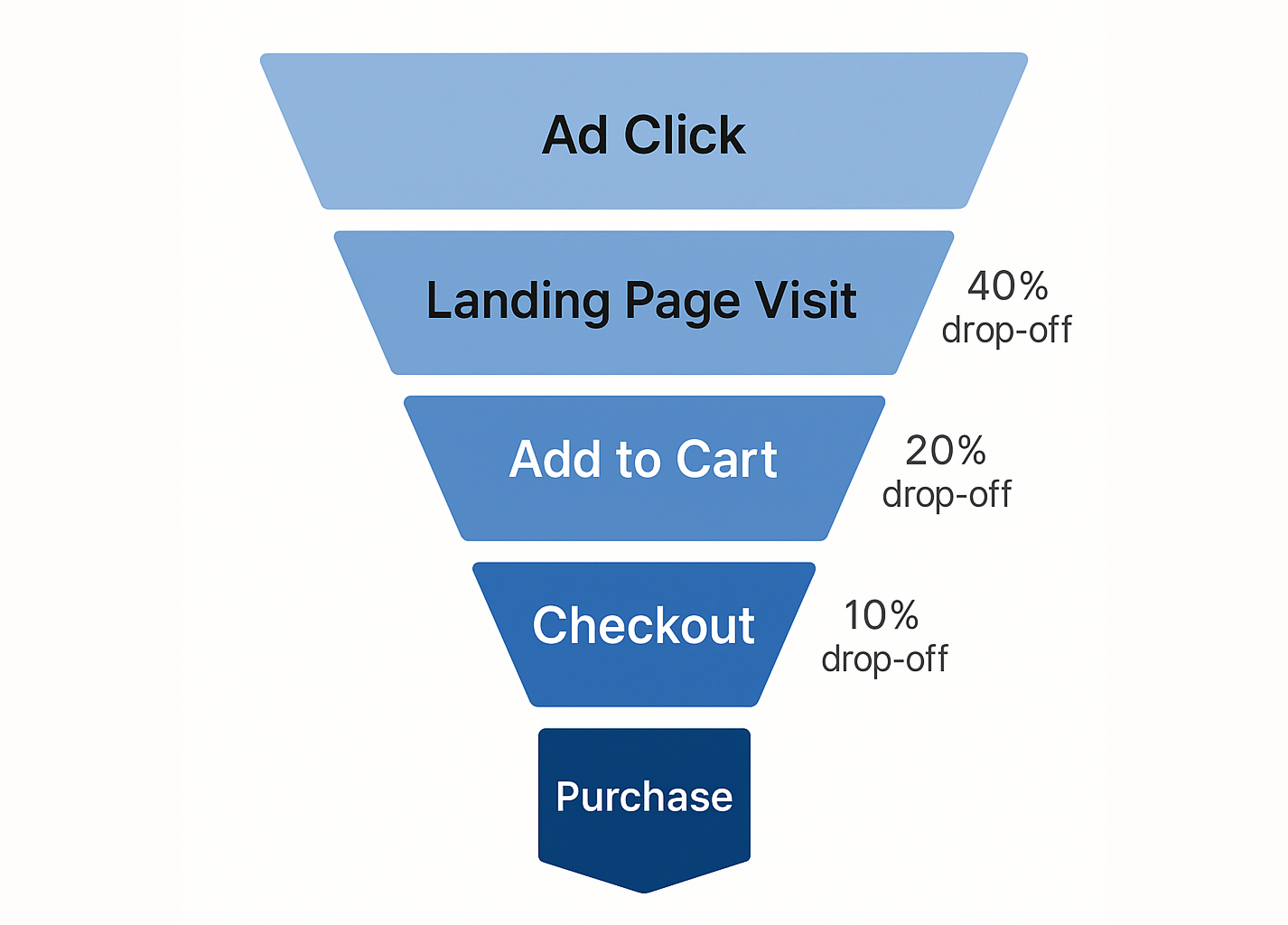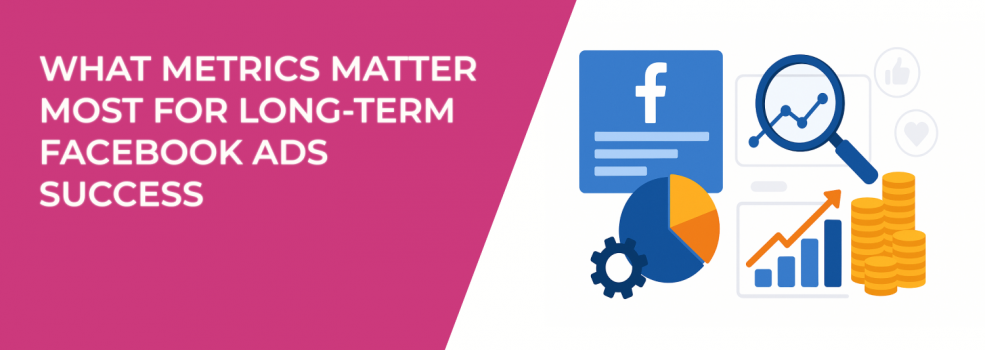Running Facebook ads isn’t just about chasing immediate returns. If you're looking to build sustainable performance — the kind that scales and compounds over time — you need to track the right metrics.
While Facebook’s dashboard offers dozens of data points, only a handful truly impact your long-term success. Below, we’ll cover those metrics, explain why they matter, and show you how to make them work for your campaigns.

1. Customer Acquisition Cost (CAC)
Customer Acquisition Cost measures how much you spend to convert a prospect into a paying customer. It’s a direct reflection of efficiency — and it becomes increasingly important as your budget grows.
To manage CAC more effectively:
-
Audit your targeting regularly. Narrower, behavior-based audiences often convert better than broad interest groups.
-
Refine landing page messaging. Make sure your page aligns with the promise made in the ad.
-
Leverage high-quality custom audiences. Using past customer data helps create tighter, better-performing segments.
Keeping CAC under control is essential to profitability. As competition increases, so does cost — unless you're optimizing consistently. A manageable CAC gives you the flexibility to reinvest in growth, rather than scramble to maintain it.
2. Return on Ad Spend (ROAS)
ROAS tells you how much revenue you earn for every dollar spent on advertising. It’s one of the most important financial indicators in your ad account.
To improve or maintain strong ROAS:
-
Segment campaigns by audience type. Cold, warm, and remarketing audiences often perform very differently.
-
Pause low-performing placements. If certain placements consistently under-deliver, reallocate your spend.
-
Introduce upsell offers or bundles. Raising average order value helps increase ROAS without raising CAC.
Tracking ROAS over time — not just week by week — helps you understand whether you're building a reliable acquisition machine or riding the wave of a single lucky campaign.
3. Click-Through Rate (CTR)
CTR reflects how often people click your ad after seeing it. It’s a strong indicator of relevance and creative strength.

To improve CTR performance:
-
Use visually engaging creatives. Bold design or clean motion often outperforms static, generic visuals.
-
Write headlines that address pain points or offer value. A clear, specific promise beats vague claims.
-
Test different formats. Carousels, videos, and collections can lift CTR when static images underperform.
A consistently high CTR helps lower your overall costs and signals to Facebook that your ad is worth showing. Over time, strong CTR leads to more efficient reach and better conversion potential.
4. Frequency
Frequency measures how often your audience sees the same ad. Too low, and they may not notice you. Too high, and they may start tuning you out or becoming annoyed.
To manage frequency wisely:
-
Monitor it on a campaign level. A frequency above 3 on cold traffic often signals fatigue.
-
Rotate creative assets regularly. Refreshing visuals and copy can extend the life of a campaign.
-
Expand or diversify your audiences. Introduce new interest or lookalike segments to reduce saturation.
Maintaining the right frequency helps preserve audience goodwill and keeps engagement rates from falling over time. It’s a small adjustment that can have a big impact on your cost per result.
5. Conversion Rate (CVR)
Conversion Rate measures how well your landing page or funnel turns clicks into meaningful actions. A poor CVR is often a signal that the problem lies beyond the ad itself.

To increase conversion rates:
-
Ensure message match between ad and landing page. Avoid disconnects between what’s promised and what’s delivered.
-
Minimize friction in the funnel. Simplify your forms, checkouts, or navigation.
-
Include strong calls to action. Use concise, action-oriented copy and make buttons stand out visually.
High click volume means nothing if no one completes the action you care about. Optimizing your website and funnel for conversions is just as important as optimizing the ad.
6. Lifetime Value (LTV)
Lifetime Value estimates the total revenue a customer brings in over their entire relationship with your brand. For businesses focused on long-term growth, this metric is critical.
To boost LTV:
-
Use post-purchase follow-up emails. Encourage repeat purchases with personalized offers.
-
Launch loyalty programs. Give people reasons to stay engaged and come back.
-
Upsell to existing customers. Promote complementary or higher-tier products.
If your average LTV is strong, you can afford to pay more to acquire a customer. That gives you a competitive edge — especially when scaling into more expensive audiences.
7. Quality Rankings (Ad Relevance)
Facebook scores your ads based on how they perform compared to others targeting the same audience. These include:
-
Quality Ranking: Measures perceived quality relative to competitors.
-
Engagement Rate Ranking: Measures how likely users are to interact.
-
Conversion Rate Ranking: Predicts how likely users are to take action.
To improve your rankings:
-
Use highly relevant creatives. Ads that speak directly to the audience’s intent tend to rank higher.
-
Avoid exaggerated claims or clickbait. These tactics may reduce trust and lower your quality score.
-
Improve the overall experience. A better landing page, faster load time, and clearer messaging all help.
Ads with higher rankings often benefit from lower delivery costs and broader reach. Even a small improvement here can compound your long-term efficiency.
Trends Matter More Than Snapshots
It’s tempting to overreact to a single dip in performance. But long-term success isn’t built on isolated spikes — it’s built on patterns.
Watch how your metrics change over time:
-
Are CAC and frequency gradually increasing while CTR drops?
-
Is ROAS stable during scaling, or does it begin to fall?
-
Are your best-performing ads starting to lose relevance?
These shifts help you catch issues early, before they affect your overall profitability. And when you're armed with the right data, you're better equipped to test, adapt, and improve your campaigns — consistently.
For a deeper understanding of why certain targeting methods work better than others, see this guide on audience definition. You can also learn more about why broad interest targeting often underperforms, especially over time.

